Abstract
The virus growth in the pharyngeal area and the virus excretion in milk of susceptible and vaccinated dairy cows after intranasal instillation of foot-and-mouth disease (FMD) virus type O1 were examined. Ten vaccinated cows were purchased through a market. Of these, nine had delivered their first calf. The cows were inoculated 2-9 months after having received the last dose of vaccine. All vaccinated cows resisted the intranasal challenge. The virus multiplied in the pharyngeal area but, compared with two susceptible controls, to a limited extent. No clear relation was found between virus growth and the titre of circulating neutralizing antibody at the time of challenge. Virus was first detected in milk samples of the susceptible cows when generalized FMD lesions had developed on day four; the excretion lasted for 3-4 days. Up to 19 days after inoculation untreated milk of the vaccinated cows was examined for the presence of infectious FMD virus. Samples were inoculated onto cell cultures, fed to susceptible pigs and calves and injected intramuscularly and/or intradermolingually into susceptible steers. No infectious FMD virus could be detected, either in cell cultures or in susceptible animals. The animals did not develop neutralizing antibody against FMD virus and were subsequently shown to be fully susceptible to challenge. The results are discussed with particular reference to current problems regarding the export of milk products from countries where vaccination against FMD is practised to countries free of the disease.
Full text
PDF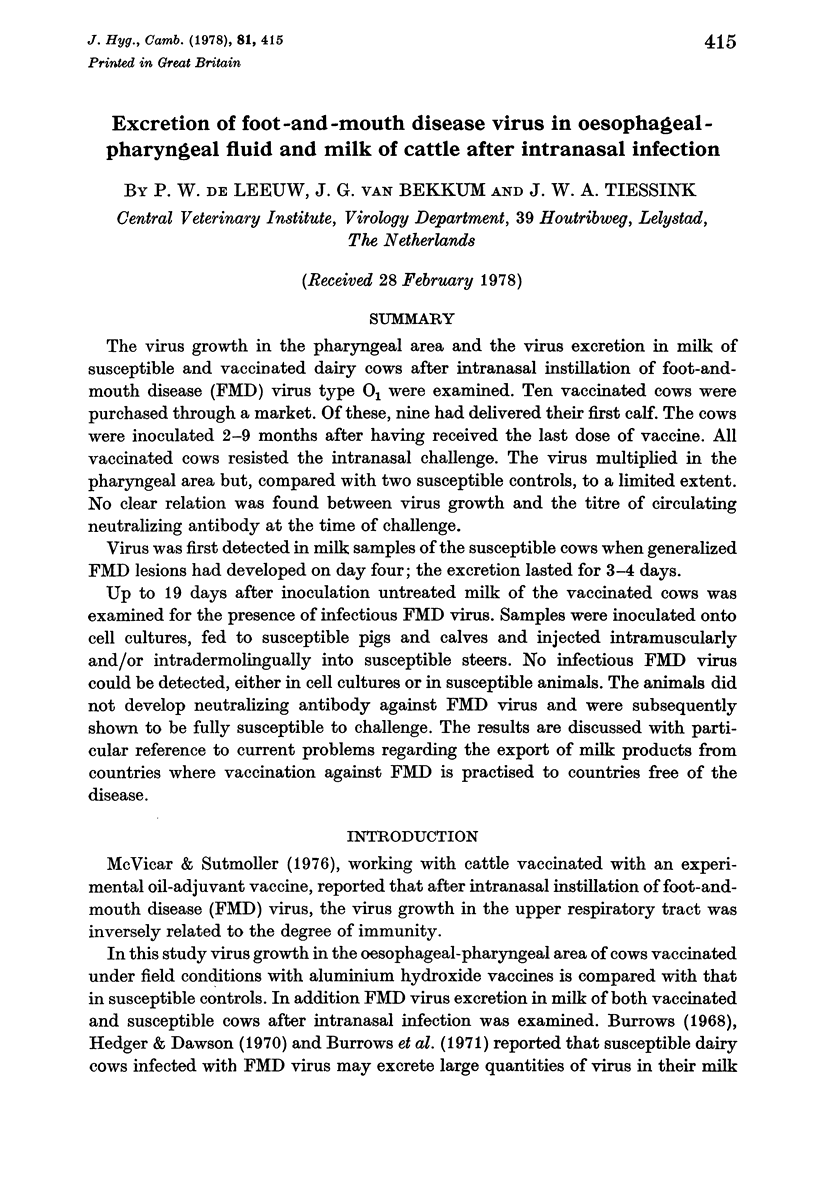

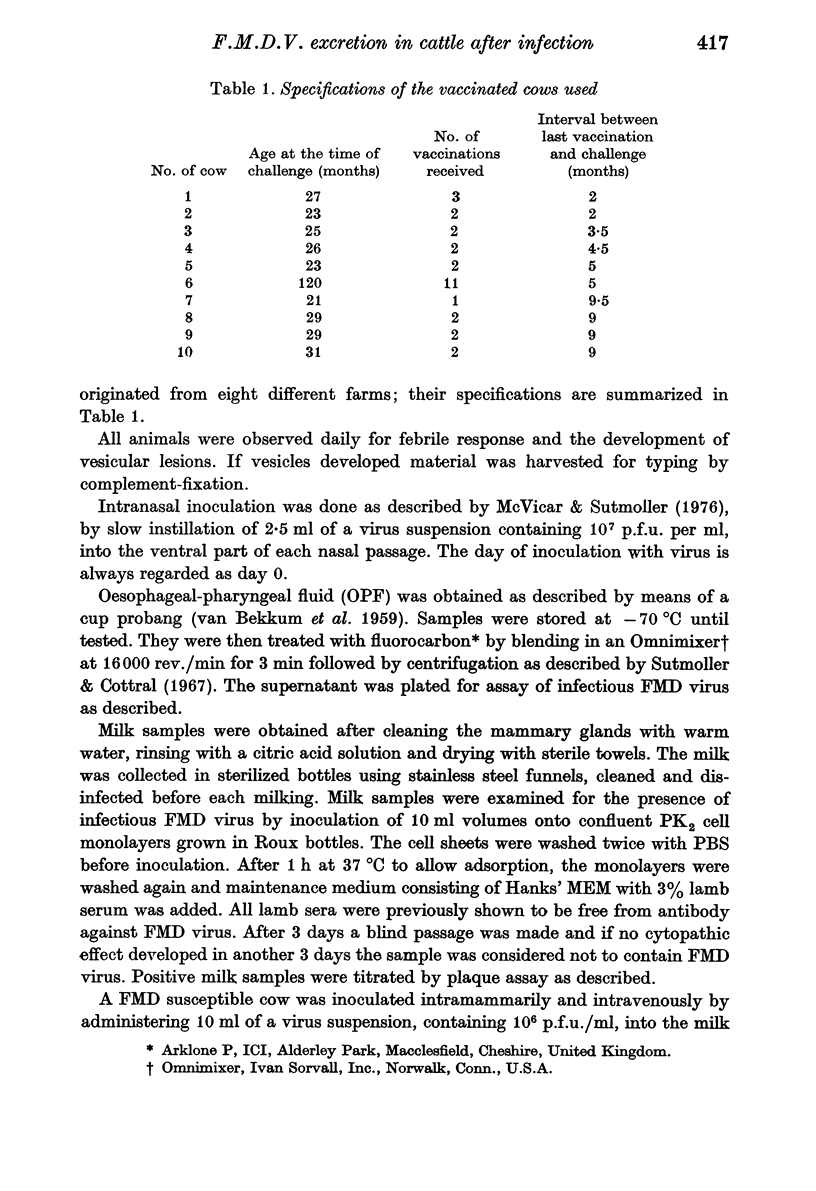
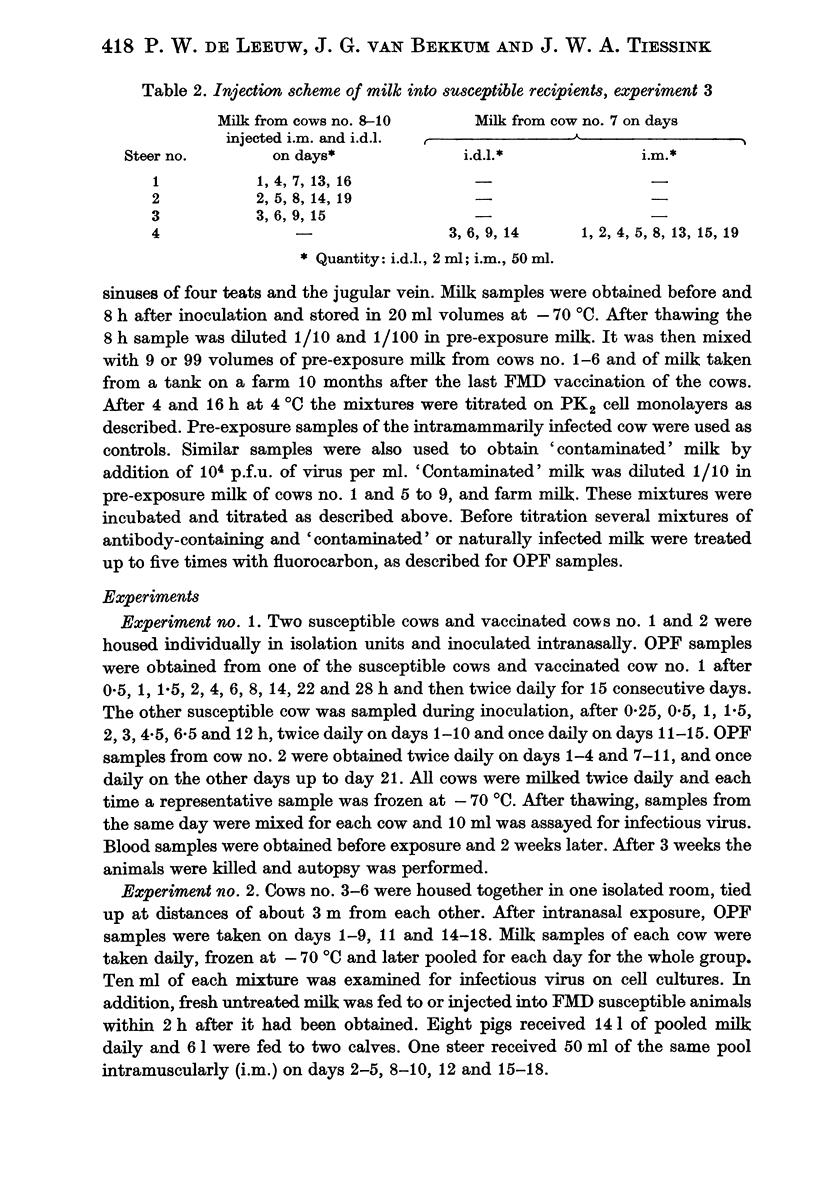
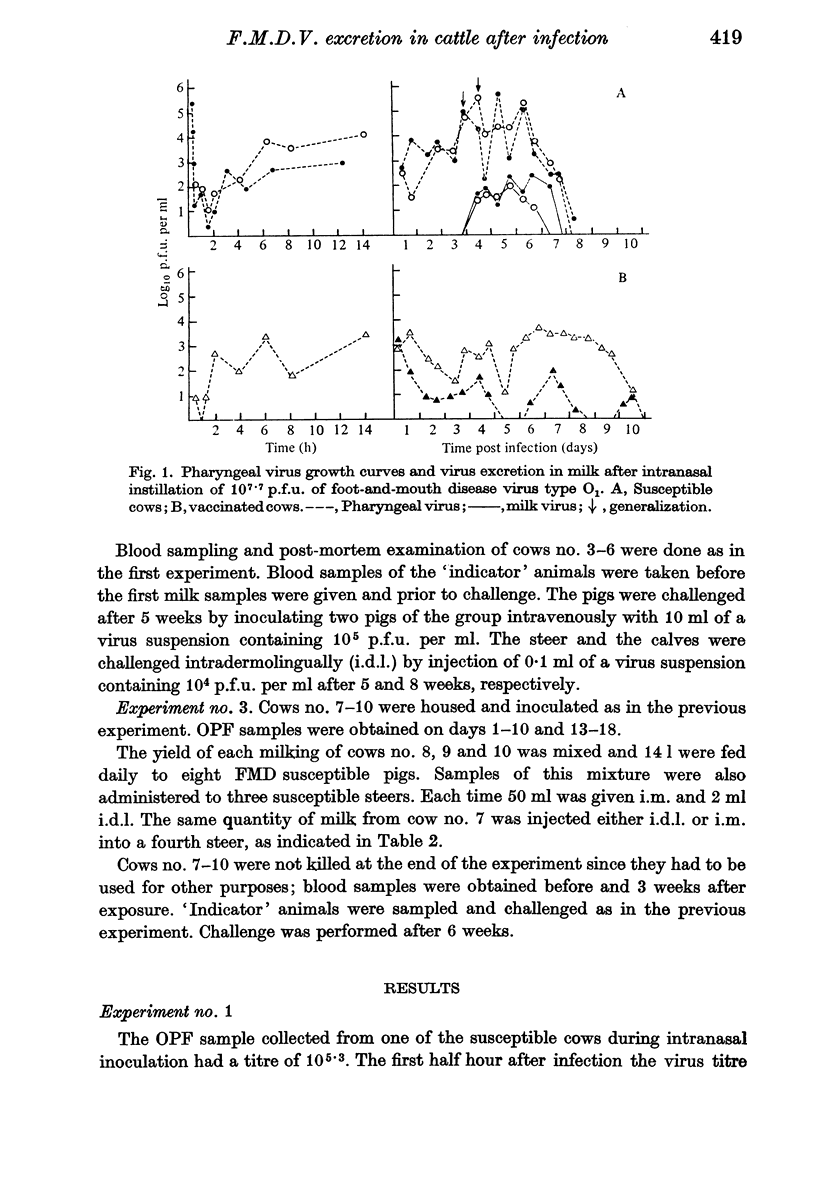
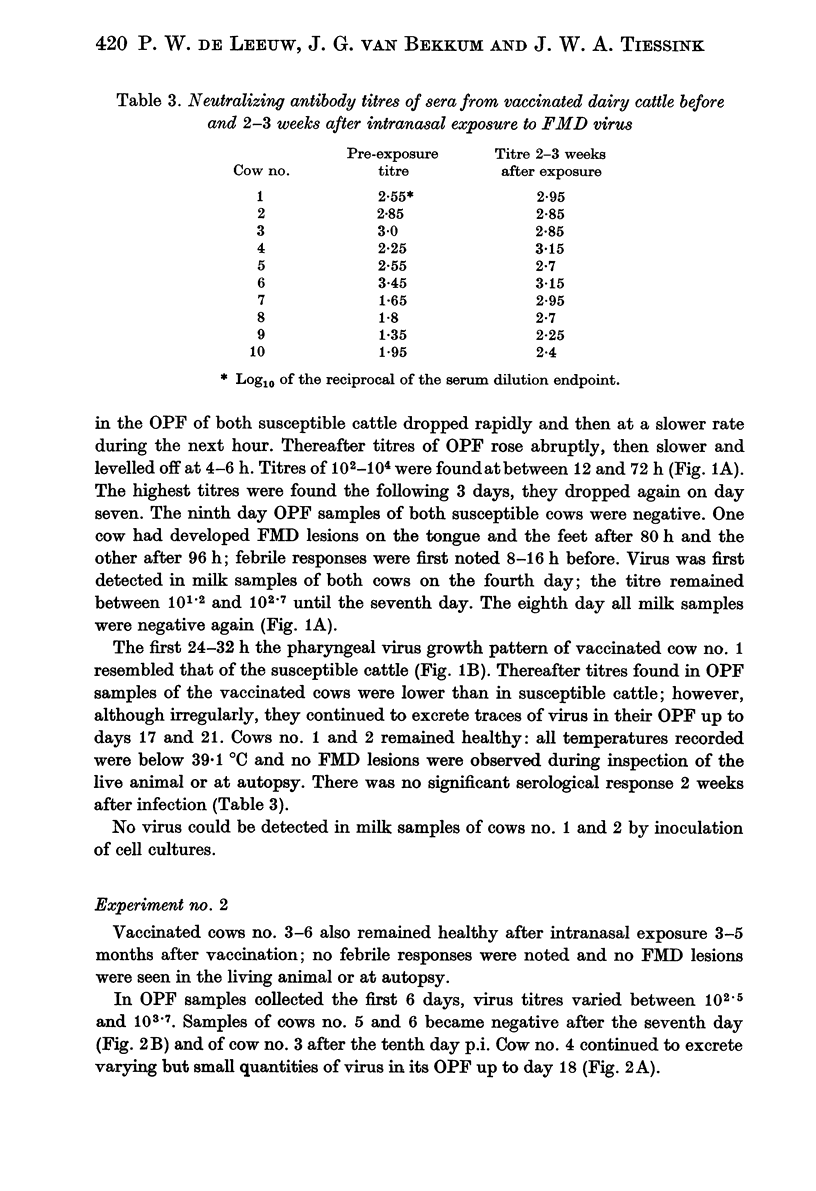
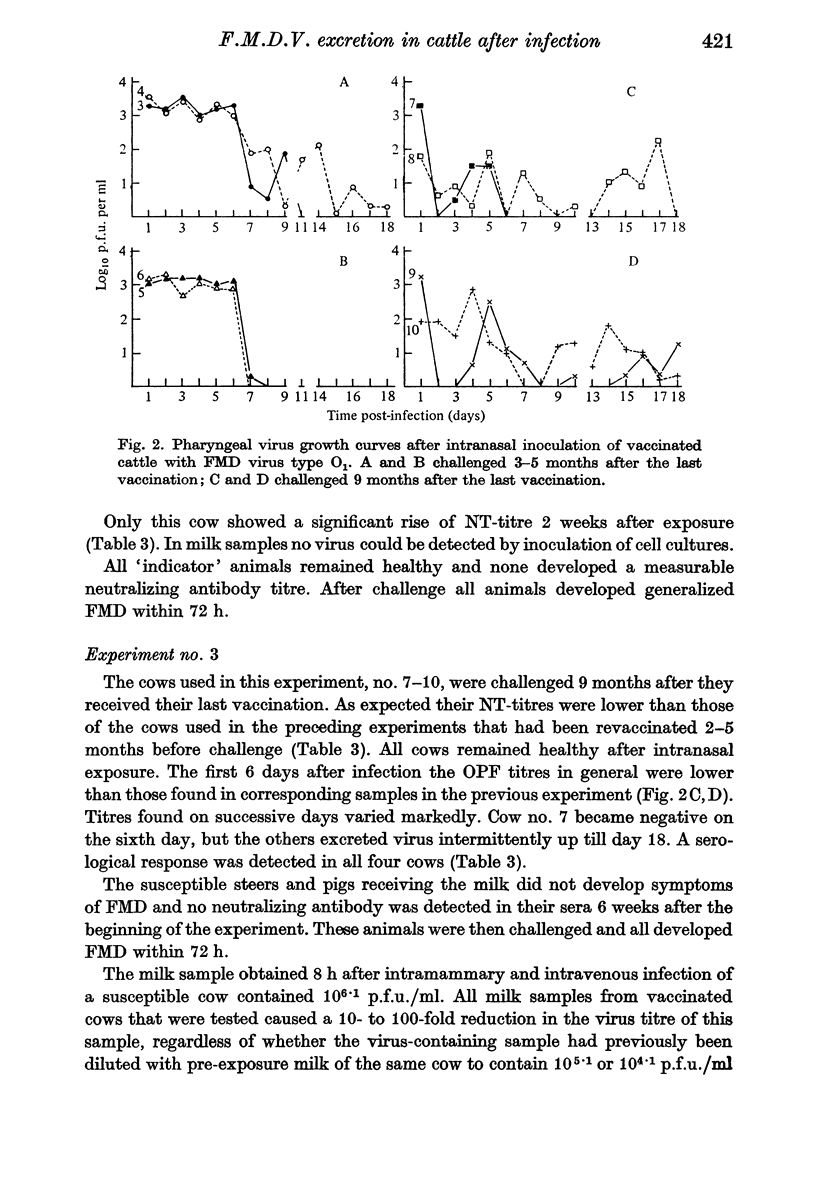
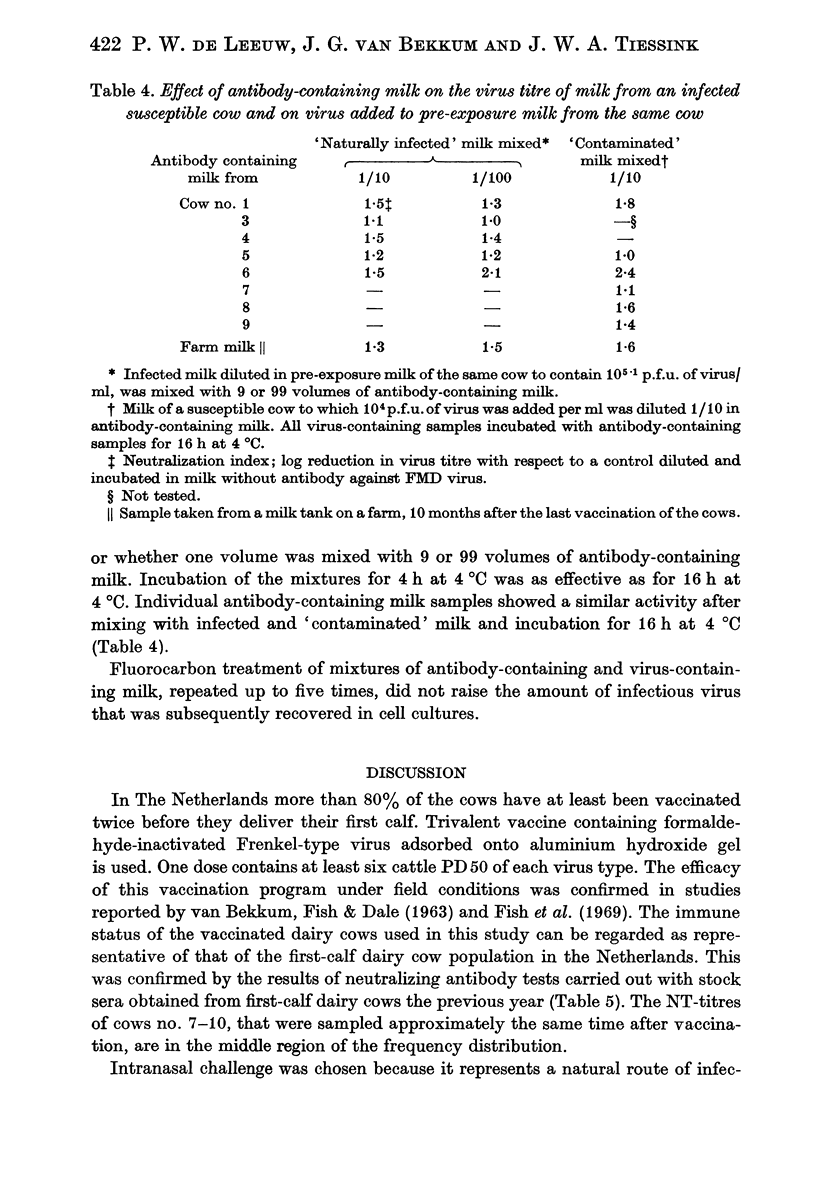
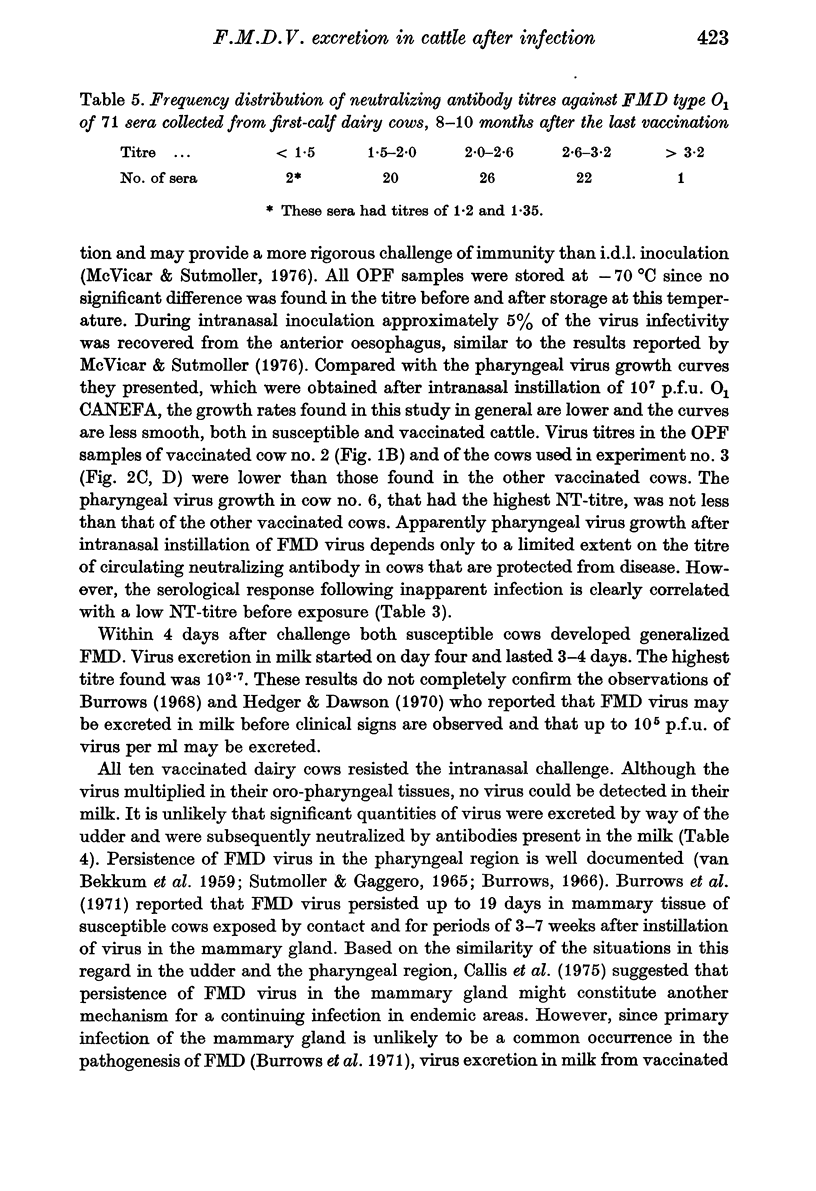
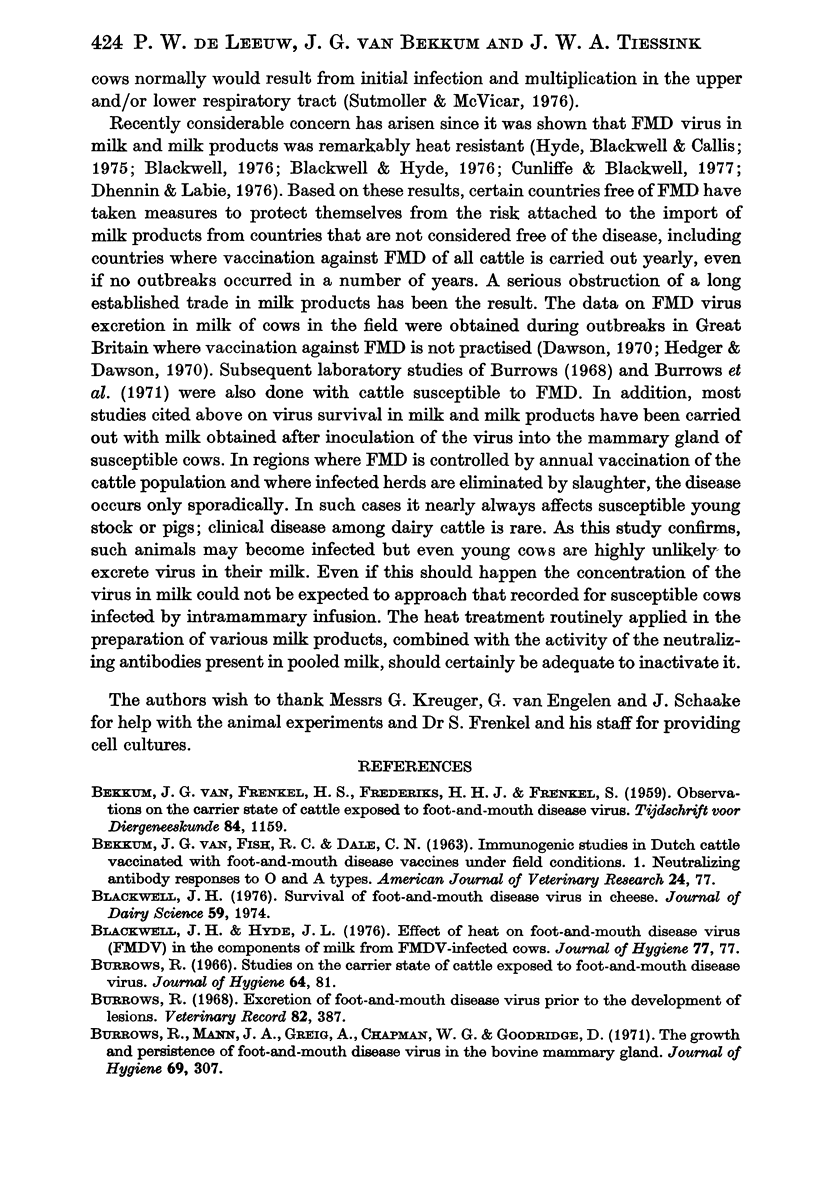

Selected References
These references are in PubMed. This may not be the complete list of references from this article.
- Blackwell J. H., Hyde J. L. Effect of heat on foot-and-mouth disease virus (FMDV) in the components of milk from FMDV-infected cows. J Hyg (Lond) 1976 Aug;77(1):77–83. doi: 10.1017/s0022172400055534. [DOI] [PMC free article] [PubMed] [Google Scholar]
- Burrows R., Mann J. A., Greig A., Chapman W. G., Goodridge D. The growth and persistence of foot-and-mouth disease virus in the bovine mammary gland. J Hyg (Lond) 1971 Jun;69(2):307–321. doi: 10.1017/s0022172400021537. [DOI] [PMC free article] [PubMed] [Google Scholar]
- Burrows R. Studies on the carrier state of cattle exposed to foot-and-mouth disease virus. J Hyg (Lond) 1966 Mar;64(1):81–90. doi: 10.1017/s0022172400040365. [DOI] [PMC free article] [PubMed] [Google Scholar]
- Dawson P. S. The involvement of milk in the spread of foot-and-mouth disease: an epidemiological study. Vet Rec. 1970 Oct 31;87(18):543–548. doi: 10.1136/vr.87.18.543. [DOI] [PubMed] [Google Scholar]
- Fish R. C., van Bekkum J. G., Lehmann R. P., Richardson G. V. Immunologic responses in Dutch cattle vaccinated with foot-and-mouth disease vaccines under field conditions: neutralizing antibody responses to O, A, and C types. Am J Vet Res. 1969 Dec;30(12):2115–2123. [PubMed] [Google Scholar]
- Hedger R. S., Dawson P. S. Foot-and-mouth disease virus in milk: an epidemiological study. Vet Rec. 1970 Aug 15;87(7):186–passim. doi: 10.1136/vr.87.7.186. [DOI] [PubMed] [Google Scholar]
- Hyde J. L., Blackwell J. H., Callis J. J. Effect of pasteurization and evaporation on foot-and-mouth disease virus in whole milk from infected cows. Can J Comp Med. 1975 Jul;39(3):305–309. [PMC free article] [PubMed] [Google Scholar]
- McVicar J. W., Sutmoller P. Growth of foot-and-mouth disease virus in the upper respiratory tract of non-immunized, vaccinated, and recovered cattle after intranasal inoculation. J Hyg (Lond) 1976 Jun;76(3):467–481. doi: 10.1017/s0022172400055406. [DOI] [PMC free article] [PubMed] [Google Scholar]
- doi: 10.1177/003591577006300158. [DOI] [PMC free article] [Google Scholar]
- Sutmoller P., McVicar J. W. Pathogenesis of foot-and-mouth disease: the lung as an additional portal of entry of the virus. J Hyg (Lond) 1976 Oct;77(2):235–243. doi: 10.1017/s0022172400024669. [DOI] [PMC free article] [PubMed] [Google Scholar]


